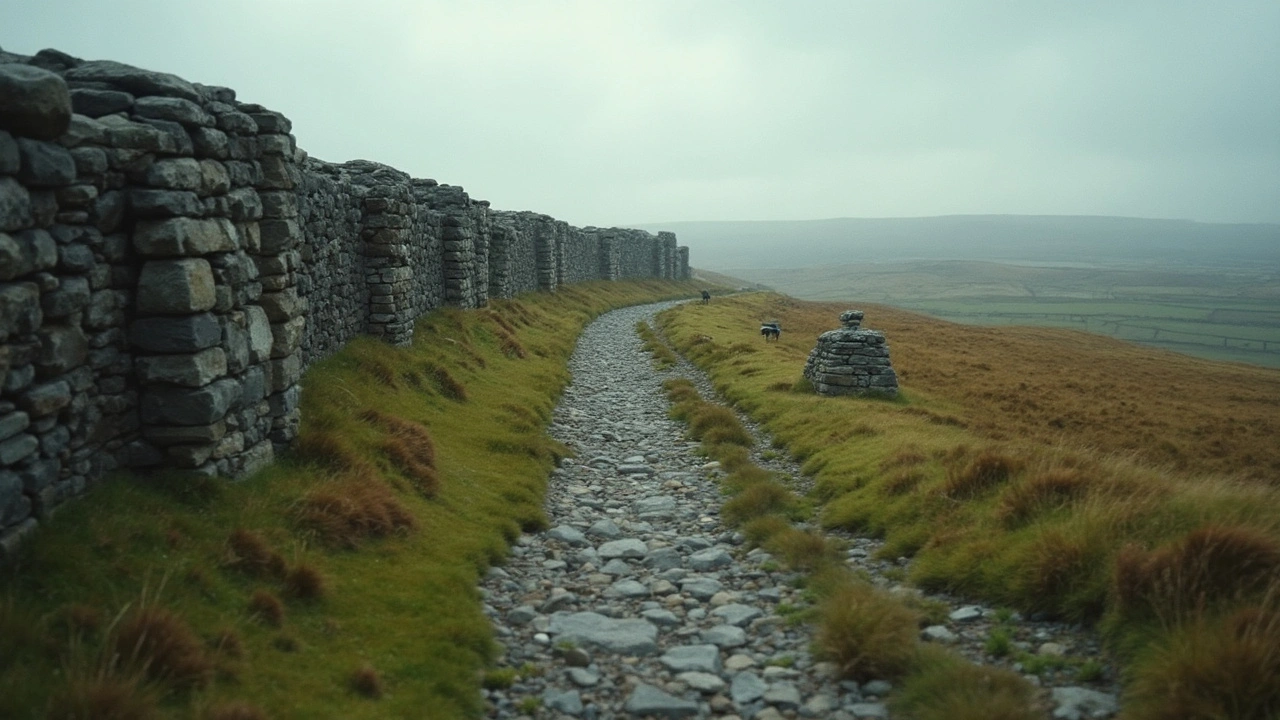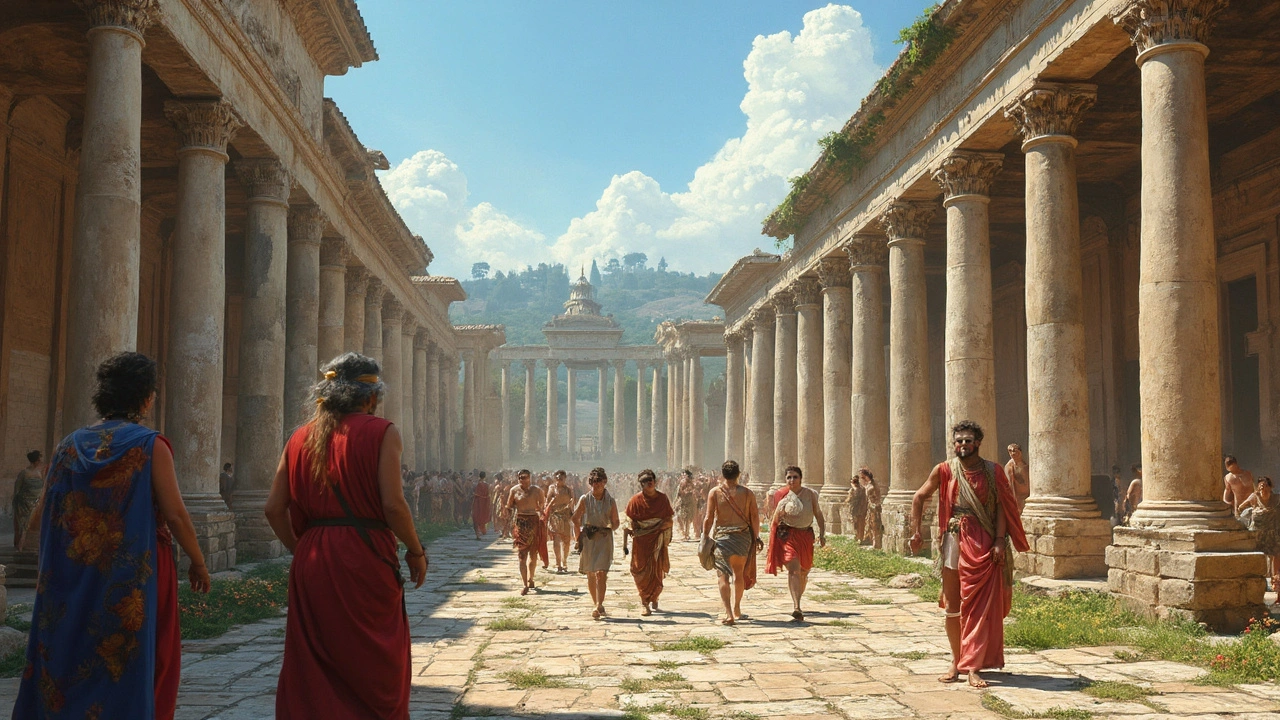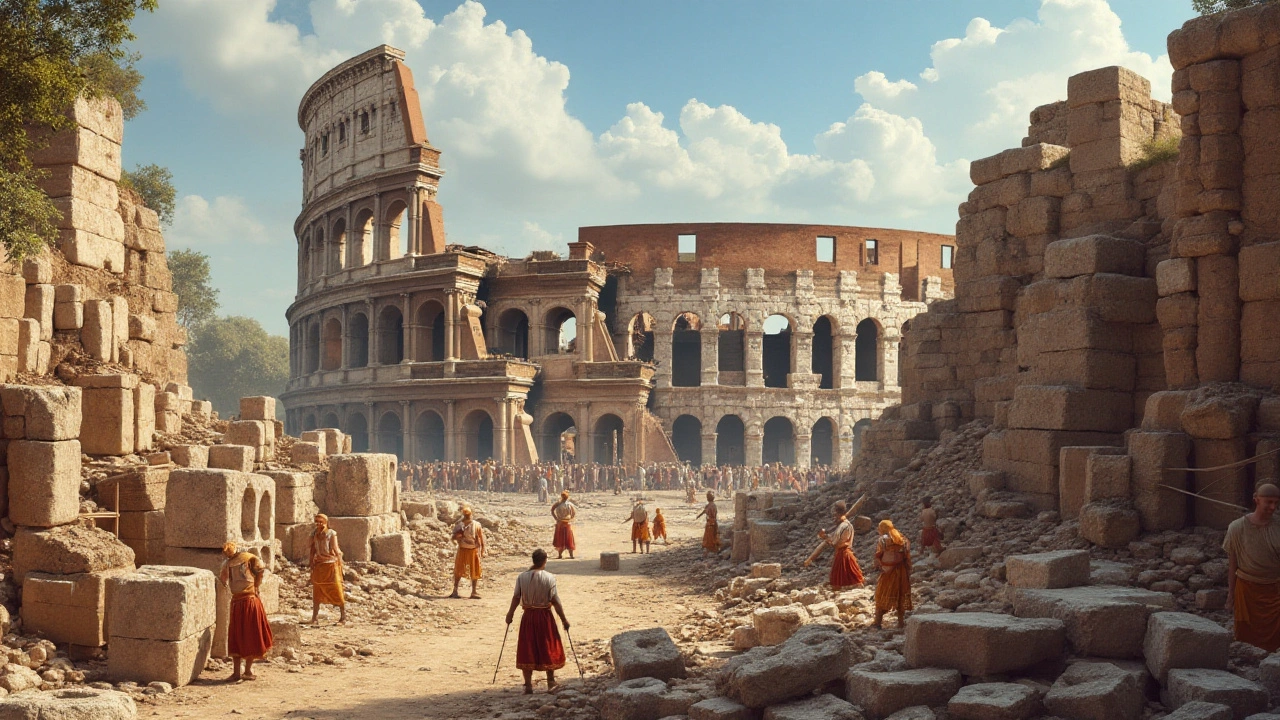Roman engineering: the tricks that made an empire last
More than 2,000 years after Rome peaked, you can still walk on their roads, visit buildings with original concrete, and see aqueduct piers holding steady. Roman engineering wasn’t fancy for show — it focused on practical solutions that lasted. If you want to understand why their work survives and how to spot it on a trip, this page gives simple, useful pointers.
Key innovations and what they did
Concrete based on volcanic ash (pozzolana) made buildings waterproof and strong. That’s why the Pantheon’s dome still stands — the Romans mixed lighter materials near the top to reduce weight. The arch and vault let them span wide spaces without modern steel. Arches transfer weight to the sides, so bridges, aqueducts, and city gates could be both slim and sturdy.
Aqueducts moved fresh water across valleys and hills with precision. Roman survey tools like the groma and careful gradient planning kept water flowing at less than a few meters drop per kilometer. Roads used layered construction — heavy stones at the bottom, gravel, and tight paving at the top — so rain drained away and wagons rolled smoothly. The Cloaca Maxima, their main sewer, shows how they planned drainage and public health into city design.
How to spot Roman engineering when you travel
Look for rounded arches and vaults in bridges and gates. If a building has a thick concrete core with brick or stone facing, that’s often Roman technique. Aqueducts show regular piers with arches and a continuous channel on top; sometimes they cut the channel into bedrock. Roads that run straight for miles, sometimes on raised embankments and with a visible layered cross-section at breaks, are classic Roman roads.
Check building joints and materials: you’ll often see small tufa blocks or bricks held together with lighter mortar layers. The Pantheon’s interior concrete changes mix by height — darker, heavier material near the base, lighter near the dome crown. If a structure sits where two engineering needs meet — like a harbor with breakwaters and warehouses — it may hide Roman marine concrete, which used seawater and volcanic ash to resist corrosion.
Why should you care? Modern engineers still learn from Roman choices: material gradients for weight, layered roadbeds for drainage, and the economy of repeated modular elements like arches. For travelers, spotting these details turns ruins into clear stories about how cities worked centuries ago.
Short tip: take photos of arches, road cross-sections, and any exposed concrete. Compare them to museum notes or guidebook captions. You’ll start recognizing the same solutions used from Spain to Syria.
Want more examples and places to visit? Check articles on ancient Roman architecture and hidden Roman gems to match theory with actual sites you can walk and measure yourself.

Ancient Roman Architecture: Power, Prestige, and Engineering That Built an Empire
How Rome used architecture to project power and solve real problems. Learn the tech, the symbols, and how to read Roman buildings in minutes.
Read more
Ancient Roman Architecture: Masterpieces, Engineering, and Lasting Influence
Take a vivid journey into Ancient Roman architecture—discover secrets behind iconic buildings, see engineering marvels, and learn why Roman style still shapes our world.
Read more
The Marvels of Ancient Roman Architecture: Materials and Methods
Discover the ingenious materials and techniques used by ancient Romans to construct some of the most iconic structures in history. Explore the types of materials they used, their construction methods, and the lasting impact these innovations have had on modern architecture.
Read more